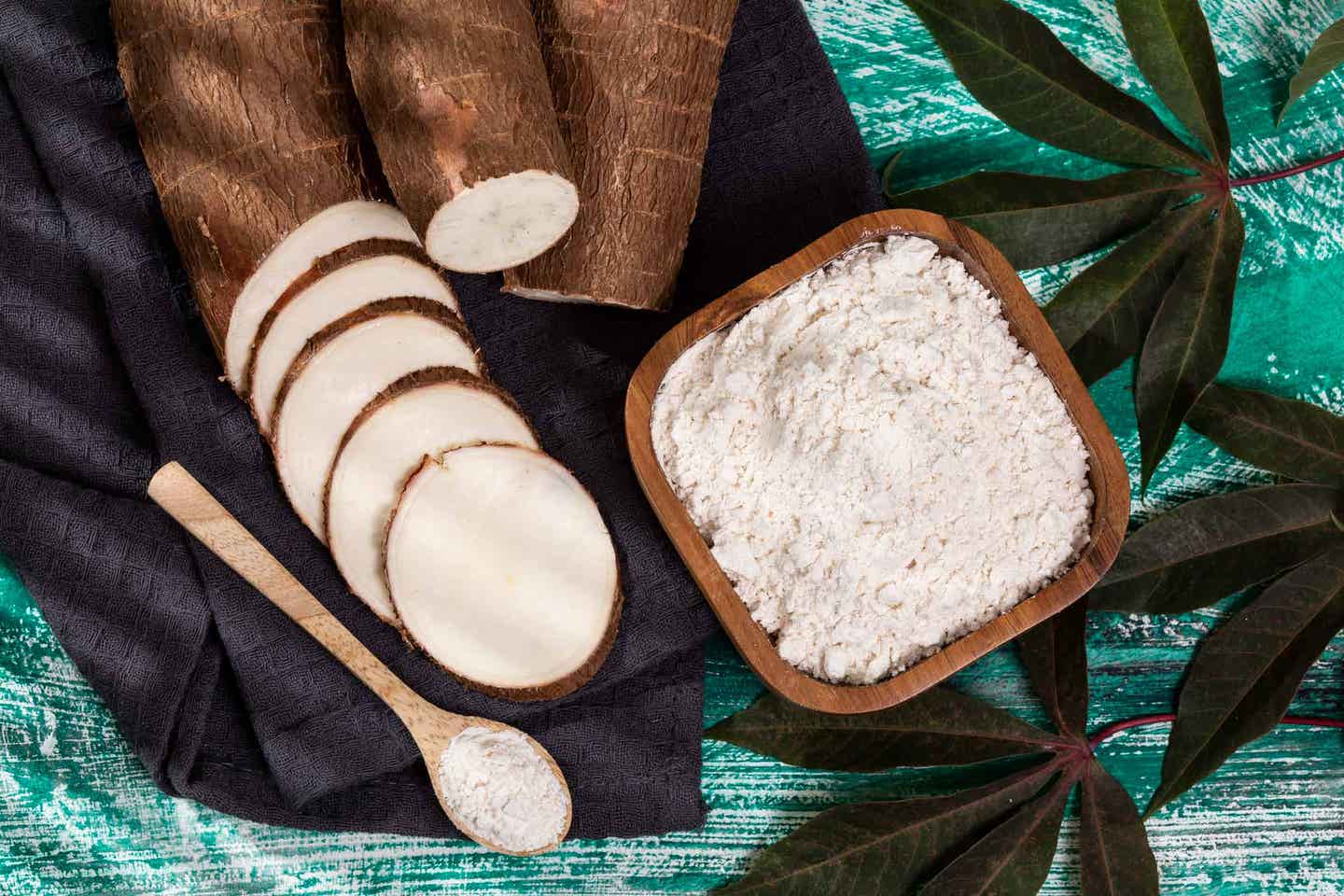
What Is Cassava, and How Do You Cook With It?
“Cassava,” “yuca,” “manioc,” and “tapioca” are all names for a large, hard root vegetable that is native to Brazil. Cassava is a staple food throughout Latin America, South America, the Caribbean, and West Africa, where it is best known in fufu, a chewy, dough-like side dish made of cooked, kneaded (and sometimes fermented) cassava flesh. The thick-skinned tubers are also used to make two types of flour: tapioca flour (or starch) and cassava flour, which are both gluten-free.
How to Cook with Cassava (Yuca)
When you think of cassava as just another starchy root vegetable, there’s no end to the ways you can use it in the kitchen. In fact, cassava can be used interchangeably with potatoes and sweet potatoes in many recipes. (Yuca/cassava shares one important-to-know characteristic with potatoes: Both can be toxic when consumed raw and need to be cooked before eating.) Throughout Latin America, South America, and the Caribbean, yuca/cassava is added to stews, mashed for savory side dishes, and baked or fried to make crunchy fries.
Cooked cassava has the dense, slightly fibrous texture of a baked sweet potato with a mild, slightly nutty flavor that’s closer to that of a white or yellow potato. Its high starch content makes it extra creamy when simmered or steamed, extra fluffy when mashed, and extra crispy when roasted or fried.
How to Prep It
At first glance, hard, thick-skinned cassava root can seem a little daunting to prepare, especially since it must be peeled: The root’s thick skin is not only unappetizing; it contains toxic compounds and is often coated in wax so it will stay fresh during transport.
Prepping cassava is similar to prepping pineapple. Here’s how to tackle the task.
- Trim the hardened ends of the root, then cut it into 3-inch lengths with a large, sharp knife.
- Stand each piece on the cutting board and use a sharp paring knife or utility knife to cut away the thick skin. (The skin is too tough for a vegetable peeler.)
- Halve or quarter each piece to have access to the root’s core. Cut or scrape away any core areas that look too fibrous or are discolored.
- Use the peeled as directed in recipes.
How to Make Cassava (Yuca) Fries and Fritters
Yuca cooks to crunchy perfection without oil, thanks to the veggie’s low moisture content and high starch levels, making it a great option for french fries. Check out our super simple yuca fries recipe to learn how to make them at home in the oven, with just 15 minutes of prep time. The root veggie also gets deliciously crispy in pan-fried fritters.
Selection and Storage
Whole cassava root is available at most well-stocked supermarkets. Look for hard roots with no signs of cracking or discoloration. If it’s possible to see the flesh on one end of the root, check to see that there are no lines or black spots running through it. Store whole roots up to 1 week at room temperature. Or peel, cut into chunks, and freeze for future use. Packages of peeled yuca pieces can be found in the frozen food sections of Caribbean, Latin American, Indian, and Asian groceries.
Cassava and Tapioca Flours
Cassava root is used to make two types of flour: cassava flour and tapioca flour (also called tapioca starch). Both are fine, mild-flavored, bright white flours with thickening properties that make them good for sauces, desserts, and gluten-free baked goods. Cassava flour is used extensively in South America and is made using the whole root. Tapioca flour is produced using the starch extracted from the cassava root. Boba is made with tapioca flour, as are some vegan cheeses. Cassava flour and tapioca flour are interchangeable in recipes, though cassava flour has more fiber and flavor. Learn how to use cassava flour to make a versatile gluten-free flour blend here.
Recipes to Try
Whether you’re brand-new to yuca/cassava or you’re just looking for some fresh ways to use it, try one of these easy recipes from Forks Over Knives.
- Yuca Coffee Cake with Walnuts and Orange Zest
- Baked Yuca Fritters with Roasted Red Pepper Sauce
- Yuca Salad with Fresh Greens
- Jerk-Seasoned Veggies with Yuca
- Yuca Mash with Corn and Peas
For more guidance in healthy cooking, check out Forks Meal Planner, FOK’s easy weekly meal-planning tool to keep you on a plant-based path. To learn more about a whole-food, plant-based diet, visit our Plant-Based Primer.
About the Author

About the Author
Mary Margaret Chappell
Join our mailing list
Get free recipes and the latest info on living a happy, healthy plant-based lifestyle.
By providing your email address, you consent to receive newsletter emails from Forks Over Knives. We value your privacy and will keep your email address safe. You may unsubscribe from our emails at any time.
